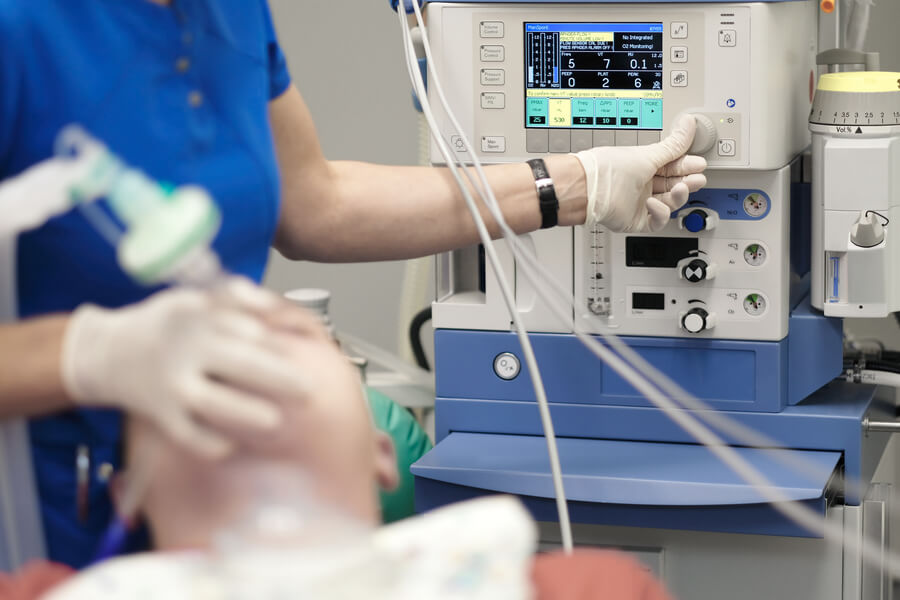
Technology for AI assistance to anesthesiologists is being developed through research
Researchers at MIT and Massachusetts General Hospital (MGH), have revealed that advanced artificial intelligence systems may soon be available to assist anesthesiologists in operating rooms.
A special edition of AI in Medicine featured a team of neuroscientists and engineers demonstrating a machine-learning algorithm that continuously automates the dosing process for the anesthetic drug propofol. Deep reinforcement learning was used to teach the software’s neural networks how to maintain unconsciousness while also critiquing its own actions. The algorithm beat more traditional software in complex, physiology-based simulations with patients. The algorithm also performed closely to real anesthesiologists in demonstrating how it would maintain unconsciousness using recorded data from nine real operations.
Co-lead authors Marcus Badgeley and Gabe Schamberg say that the algorithm’s advancements make it possible for computers to maintain unconsciousness in patients with no additional drug. This frees up anesthesiologists to perform all other duties they have in the operating area, such as making sure patients are immobile, feel no pain, stay physiologically stable and receive sufficient oxygen.
Schamberg, a former MIT Postdoc and the study’s corresponding writer, says that one could think of our goal in terms of an aircraft’s autopilot. The captain is always looking out from the cockpit, paying attention.” “Anesthesiologists must simultaneously monitor many aspects of a patient’s physiological state. It makes sense to automate those parts of patient care we know well.”
Emery N. Brown is the senior author. Emery N. Brown is a neuroscientist at The Picower Institute for Learning and Memory and Institute for Medical Engineering and Science at MIT and an MGH anesthesiologist. He believes that the algorithm’s potential for optimizing drug dosing could help improve patient care.
Brown, the Edward Hood Tplin Professor Computational neuroscience and Health Sciences and Tech at MIT, says that “algorithms like this allow anesthesiologists more careful, near continuous vigilance over patients during general anesthesia.”
Actor and critic
The machine learning approach was developed by the research team. It would learn how to administer propofol in order to keep patients unconscious and optimize drug dosage. The research team created two neural networks that were related to the software: an “actor” who decides how much propofol to give at any given time and a critic who helps the actor to behave in a way that maximizes the “rewards”, as specified by the programmer. The researchers tried three rewards to train the algorithm: one that penalized overdosing and one that did not question the provision of any dose.
They trained the algorithm using simulations of patients. These models included advanced models of both drug pharmacokinetics (how fast propofol doses reach relevant brain regions after they are administered) and pharmacodynamics (how the drug alters consciousness once it reaches its destination). The unconsciousness levels of patients were also reflected in brain waves. This is similar to what can happen in real operating rooms. Both the actor and critic could both learn how to play their roles for different types of patients by running hundreds of simulations with various values.
The “dose penalty”, which required the critic to question every actor’s dose, proved to be the most effective reward system. This meant that the critic constantly exhorted the actor to dosing only the minimum necessary to remain unconscious. The system could sometimes dole out too much or too little without any dosing penalty. The “dose penalty” model was faster to learn and produces less errors than other value models and traditional standard software (a “proportional integral derivative” controller).
An able advisor
After training and testing the algorithm using simulations, Schamberg & Badgeley gave the “dose penalty” version a more real-world test. They fed it patient consciousness data from real patients in the operating room. Testing revealed both the strengths as well as the limitations of the algorithm.
The algorithm’s dosing decisions closely matched the anesthesiologists who were unconscious during most of the tests. Badgeley points out that the algorithm adjusted dosing every five seconds while anesthesiologists, who had many other tasks, did it every 20-30 minutes.
The researchers admit that the algorithm was not designed to induce unconsciousness. They also said that the software doesn’t know when surgery is finished, but it’s easy for anesthesiologists to handle this process.

